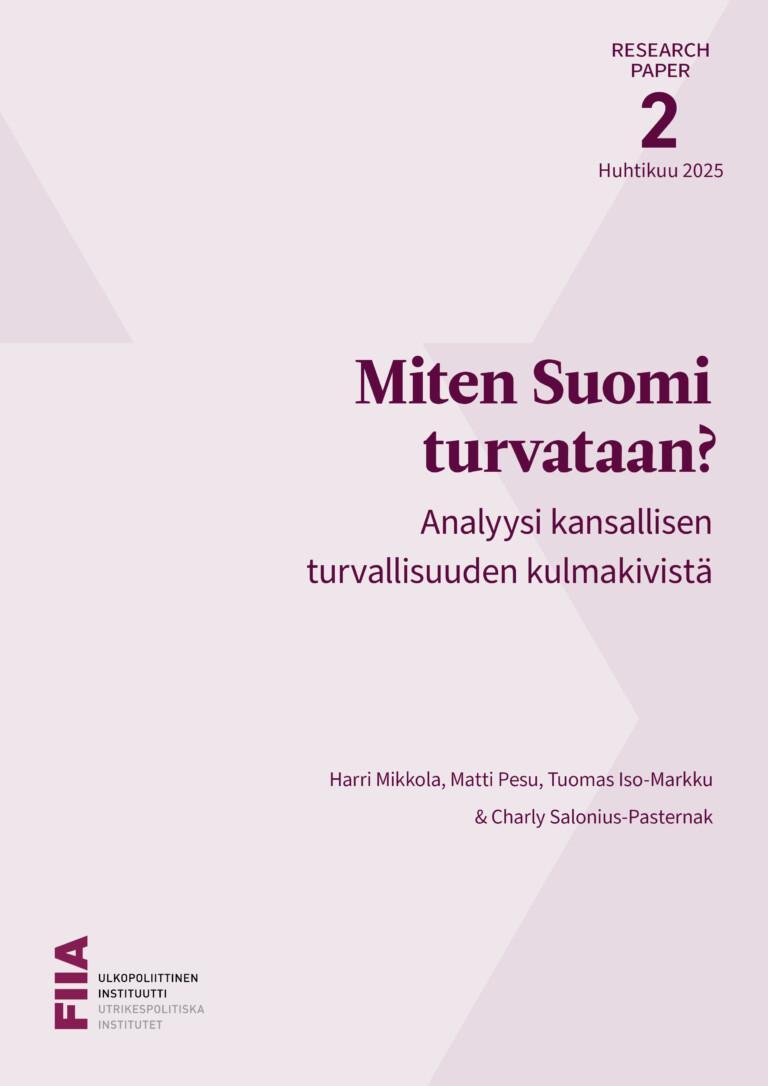
Finland’s entry into NATO marked admission to a nuclear alliance. The aim of this report is to provide an overview of the structure and trends of the international nuclear order, the basics of NATO’s nuclear deterrence and its implementation, and decision-making related to the alliance’s nuclear weapons policy. The study will also assess how Finland can participate in NATO’s nuclear deterrence policy if it so wishes and what effects NATO membership will have on Finland’s arms control policy.
Nuclear deterrence constitutes one part of NATO’s deterrence mix, and the alliance views nuclear weapons as the supreme guarantee of its security. U.S. nuclear weapons form the backbone of NATO’s nuclear deterrence, and a small proportion of its nuclear weapons are stationed in allied countries. According to NATO’s statements, the purpose of its nuclear deterrence is to preserve peace, prevent coercion and deter military aggression. NATO has not made any major changes in its nuclear weapons policy in recent years.
The key outlines of NATO’s nuclear weapons policy are decided at NATO summits. The alliance has its own senior body for discussion on nuclear weapons: the Nuclear Planning Group. Non-nuclear allies such as Finland have several opportunities to influence and participate in the alliance’s nuclear weapons policy. Importantly, as a member of NATO, Finland can continue its active arms control efforts.
This publication is part of the implementation of the Government Plan for Analysis, Assessment and Research. (tietokayttoon.fi) The content is the responsibility of the producers of the information and does not necessarily represent the view of the Government. The permanent address of the publication is: https://urn.fi/URN:ISBN:978-952-383-031-8avautuu uuteen ikkunaan.











